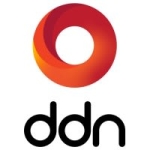What is our primary use case?
We are using it for core banking systems and virtualized enrollment. So, everything for this bank is on PowerMax, including its core banking system, which is running on Solaris, and all the relevant applications running on VMware.
How has it helped my organization?
You can use PowerMax for all workloads and consolidation. We have used it to scale thousands of VMs. This is Dell EMC's selling point.
What is most valuable?
It is a good, resilient product.
The good thing that we have found is the enhanced data savings. For example, in an XtremIO, we were seeing the space savings was 1:4 or 1:3. With PowerMax, I have seen 10:1 and 12:1. This is something that has really come out as a distinctive feature and is helping us a lot.
The Unisphere GUI has been enhanced. A lot of options have been added to the GUI. Though, if somebody is planning to buy PowerMax, they should also have some associated training with that.
What needs improvement?
We brought up this question to the implementation engineer. We were comparing use cases where a customer is using RecoverPoint, then goes to PowerMax. In our previous setup with XtremIO, we were using RecpverPoint and keeping snapshots for 30 days, every few seconds. With PowerMax, I requested this for every 15 minutes, keeping it for a week. The engineer's answer was, "There will be too many snapshots. It might slow down the system." This is specifically for the use cases where there is RecoverPoint. While PowerMax works with RecoverPoint, and you can use it, there should be some way where you can have even more snapshots and not to worry about performance and system cache.
For how long have I used the solution?
We have been using PowerMax for less than a year. We just installed it recently.
What do I think about the stability of the solution?
From my experience, it is stable enough. For our current setup, it is too early to assess stability.
What do I think about the scalability of the solution?
They support scalability. We can add more capacity when it is needed.
How are customer service and support?
I always tell my customers that Dell EMC support is good. Specifically with enterprise storage, like PowerMax and VMAX, it is really good.
How would you rate customer service and support?
Which solution did I use previously and why did I switch?
PowerMax was deployed as a replacement/tech refresh for our existing VNX.
We were using XtremIO before this. We have all of the features that were available there. Relatively, there is nothing new that we are using.
We had some challenges with our core banking system. There were performance issues, which was the reason we went to XtremIO All-Flash. NVME has really helped us here because anything less than XtremIO would have caused us issues. So, PowerMax is the best replacement or fit right now. In fact, we have seen that it has really improved the performance as well.
How was the initial setup?
The initial setup was straightforward.
We are still in the implementation phase.
The ease of administration is okay for me. However, for other team members and specifically our customers, who are not very familiar with it. It has increased provision time. Though, it is just a one-time activity. During implementation, we did the split properly. Therefore, there will not be challenges going forward.
Initially, it took a lot of time to do the initial provisioning, specifically for the Dell EMC engineer who provisioned a couple of hosts. After that, we did all the provisioning, SRDF replication, snapshots, scripting, etc., and that took awhile.
I am hoping that this is just one time. Going ahead, it should be simple to add volumes and not have to go through the cycle.
What about the implementation team?
Implementation was mainly done by a local resource, because we are not a deployment partner. The resource connected to somebody remotely from a site in Egypt. We managed to deploy it in half a day for each site. The first time that we did the provisioning, it took time, but it was a relatively straightforward process.
We had some requirements, like SRM integration, where we needed some guidance. Dell EMC has suggested that we use CloudIQ, so we want to explore that option. However, we are not using it right now.
Which other solutions did I evaluate?
We have used VMAX in other places. It has helped because it has various options for data protection. I have worked on DMX3, DMX4, and VMAX 10K. I am a fan of VMAX because it is really good. There are various command line options that allow you to do a lot of things.
Most of the products are the same and have similar features. There could even be some which might be better. However, one thing that I always liked about Dell EMC is the support, which is really good. If there is an issue and you can get somebody to resolve it, that is the most important thing. Many products have the same features, e.g., snapshot, replication, and data compression, but the support from Dell EMC is one of the best.
What other advice do I have?
It is a good enterprise-scale storage. I would rate it nine out of 10.
Generally, storage doesn't expose your data unless you have certain protocols. With PowerMax, it is too early to remark on data security because we just deployed it and migrated the data. We have not even done a proper drill or failover for data availability and data security.
It is also too early to remark on workload congestion. Though, since we have been migrating the data, which is live data, I have seen the utilization and that is performing relatively better than our previous Dell EMC platform.
From a technical perspective, you should have some technical training associated with the deployment. That is the one aspect that is complicated. Apart from that, everything is simple.
Disclosure: PeerSpot contacted the reviewer to collect the review and to validate authenticity. The reviewer was referred by the vendor, but the review is not subject to editing or approval by the vendor. The reviewer's company has a business relationship with this vendor other than being a customer: Partner









